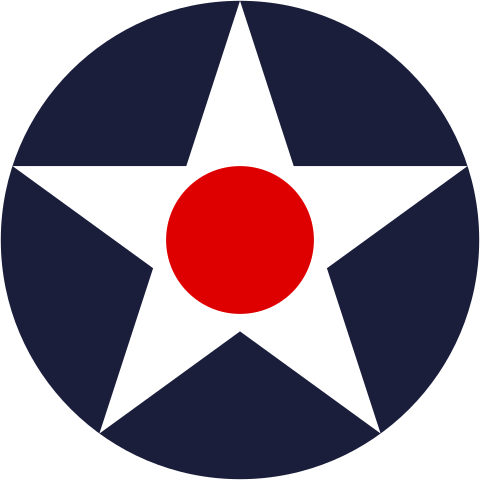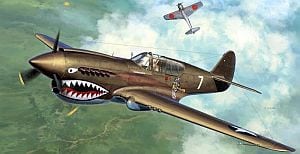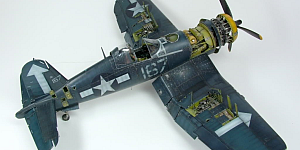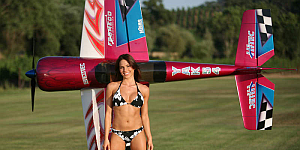Curtiss P-40 Warhawk History
| Curtiss P-40 Warhawk |
|---|
|
|
| Curtiss P-40 Warhawk Technical Drawings & Scale Model Plans |
|
|
| Curtiss P-40 Warhawk Scale Model Plans |
| Curtiss P-40 Kittyhawk Scale Model Plans |
| Curtiss P-40E Kittyhawk Scale Model Plans |
| Sources: |
| Curtiss P-40 – Snub-nosed Kittyhawks and Warhawks (Air Vanguard) |
| Jane’s Fighting Aircraft of World War II: A Comprehensive Encyclopedia |
| Warbirds: An Illustrated Guide to U.S. Military Aircraft, 1915-2000 |
| Curtiss P-40 Warhawk | Sky Corner |
| Curtiss P-40 Warhawk | Wikipedia |
The famous P-40 Warhawk was America’s most numerous fighter at the outbreak of World War Two. Marginally obsolete, it was nonetheless fast, rugged, and produced a surprising number of aces.
In July 1937 the Army Air Corps attempted to improve the performance of its radial engined P-36 fighter by having Curtiss splice an inline, water-cooled Allison engine onto the existing airframe. The new aircraft was decidedly faster while retaining the pleasant flying characteristics of the P-36 and won a U.S. Army Pursuit Competition at Wright Field, Dayton, Ohio, in 1939.
The P-40 Warhawk was fitted with three 0.50 cal. machine-guns in each wing, firing outside the airscrew disc. Bomb rack beneath the fuselage may carry a single bomb ranging from 100 to 600 lbs. Racks under wing could carry 100-150 lb. bombs or two auxiliary “belly” fuel tanks.
Army officials were sufficiently impressed to place an order for 524 Warhawks, as the plane was called, in May 1939. Both the RAF and French Air Force also expressed interest and placed sizable orders. In combat the P-40 proved something of a disappointment to the RAF, for it lacked the speed and altitude of the latest German fighters.
The 1941 attack on Pearl Harbor plunged America into World War Two, and the ensuing Philippines campaign also highlighted the shortcomings of the P-40 Warhawk in combat against more nimble Japanese adversaries. However, a legend was born when General Claire L. Chennault accepted 100 P-40Bs into his American Volunteer Group, the famous Flying Tigers. Capitalizing on the P-40 Warhawk’s fast diving speed and ability to absorb damage, he instituted a campaign of brilliant hit-and-run tactics over Burma. Consequently, 286 Japanese aircraft were shot down at a cost of four Warhawk pilots.
P-40s did valuable work in the training role straight through to the end of the war. Pilots learned formation flying, air-to-air gunnery, dive-bombing, strafing, and rudimentary blind flying, among other important skills. But perhaps the most important asset pilots gained while flying P-40 trainers was self-confidence.
In Europe, both the RAF and the Army Air Corps used the P-40 as an effective fighter-bomber throughout the North African and Italian campaigns. In an attempt to improve the flying qualities of the P-40, the Model M was built with the high-powered Merlin engine, but results were marginal. Though by 1944 the P-40 Warhawk had been fazed out of frontline American service, a total of 13,700 Warhawks of all descriptions were built and flown by 28 air forces around the world.
| Curtiss P-40 Warhawk Specifications |
|---|
| Aircraft Type: |
| fighter |
| Dimensions: |
| wingspan: 37 ft, 4 in |
| length: 33 ft, 4 in |
| height: 12 ft, 4 in |
| Weights: |
| empty: 6,550 lb |
| gross: 8,850 lb |
| Power plant: |
| 1 × 1,360 hp Allison V-1710 liquid-cooled engine |
| Performance: |
| maximum speed: 350 mph |
| ceiling: 31,000 ft |
| maximum range: 360 mi |
| Armament: |
| 6 × 0.50 in calibre machine guns |
| 500 lb of bombs |
| Operational Use: |
| 1939–1944 |











